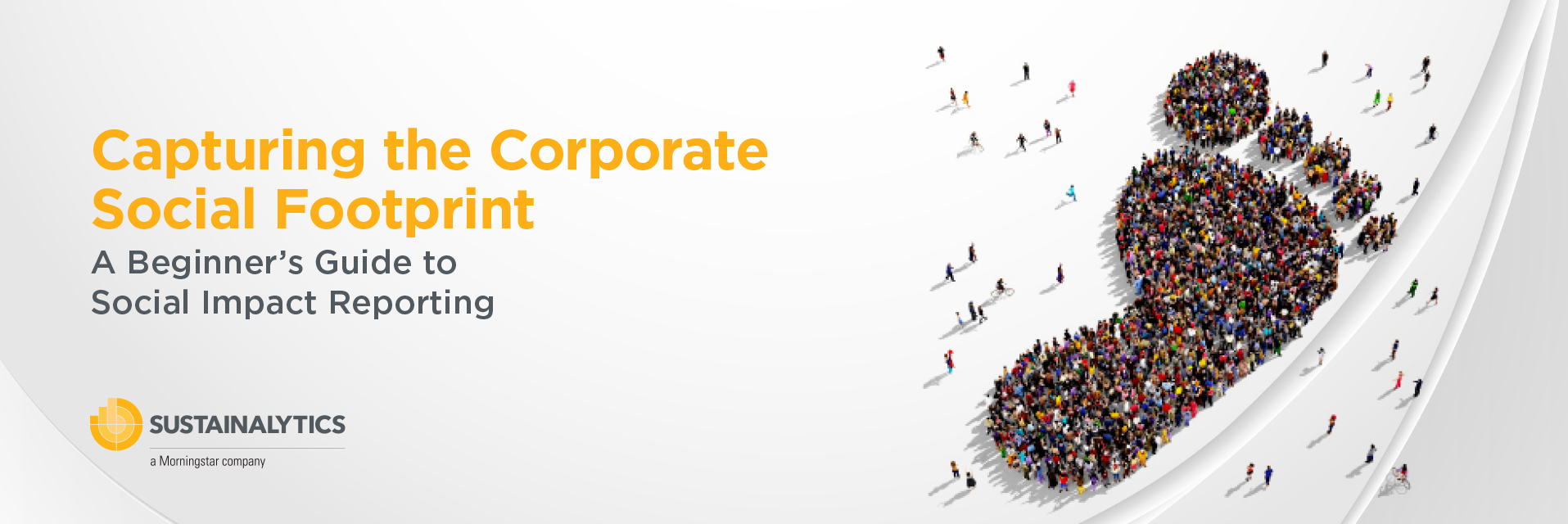“If you can’t measure it, you can’t improve it.”
-Peter Drucker
The market for green and social bonds is rapidly growing and constantly developing. Investors and other stakeholders are driving this growth. To inform investment decisions, they expect issuers to address environmental, social, and governance (ESG) issues, measure their efforts, and report on the impacts. With green bonds, for example, an investor can be certain that the projects being financed have some positive environmental impact, or at least do not actively harm the environment. But to truly understand the size of the impact, investors are going to want quantified impact measurement or impact reporting.
With impact reporting for green and social bonds, investors get enhanced transparency through metrics that show how effective a bond is. This article covers the current state of impact measurement for bonds, the latest movement toward standardizing reporting methodologies, and how corporations can start to meet investors’ expectations for impact reporting as the market matures.
What Quantification Really Means for Green Bonds, Social Bonds, and Other Sustainability-Linked Instruments
Now that sustainable finance is mainstream, more traditional investors are moving into green and social bonds. These investors expect the same level of transparency with companies’ impact metrics as they do with financial metrics like risk and profit. They take it for granted that they can optimize a portfolio of assets to balance returns against the risk level they’re comfortable with. However, corporate impact measurement and reporting have tended to lack this level of transparency.
Both risk and reward for a given investment are available to issuers in single numbers that are widely understood and comparable. The goal of impact reporting is to provide a single, easy-to-understand number to describe a company’s environmental or social impact.
Quantified impact measurement offers the promise of helping investors place their money where it gets the maximum effect toward sustainability. This analysis isn’t quite possible yet in most situations, but it is where the market is heading.
The Challenge of Standardizing Impact Measurements and Methodologies
Complicating matters, issuers apply a variety of impact metrics to their bonds. Even when the same metrics are used, the results may be incomparable due to differing methodologies and assumptions. In addition, using similar methodologies does not guarantee the results will be comparable, as the data sources used to perform the measurement may be inconsistent. Due to these challenges, there are currently no recommended methodologies to calculate impact metrics.
A movement to standardize these metrics is gaining momentum. And pioneering organizations in the field will have a chance to influence future market practices.
Frameworks as a Starting Point for Aligning Impact Measurement With Market Expectations
One influential example of the move toward standardization comes from the International Capital Market Association (ICMA). The association has developed a set of suggested metrics for reporting the environmental impact of bonds, based on input from several large financial institutions. These metrics provide guidance for what kind of reporting the market expects. They focus mainly on greenhouse gas emissions, but in some cases, they also recommend other environmental metrics and qualitative evaluations.
The Need for Expertise and Credibility Amid Rapid Market Changes
While impact reporting metrics for bonds are becoming standardized, new technologies or approaches to address climate change financed by bonds are also rapidly evolving. This means that methodologies for impact calculations across use of proceeds require frequent updating and development. As a result, there are few or no precedents that can be used in environmental impact calculations. These complexities can make it difficult for issuers without the relevant expertise to meet market expectations for reporting.
Despite the limitations, reporting on social and environmental impact, especially with the added legitimacy of a third party, will be an increasingly important way for companies to meet their impact goals and protect their reputations. It will assist in meeting common frameworks and pledges such as Science Based Targets, EU Green Bond Standards, and the Sustainable Development Goals (SDGs). Impact reporting can also prepare organizations for future regulations.
Measurement and Integrity as the Keys to Overcoming Greenwashing
Measuring the impacts of bonds, such as reductions of greenhouse gas (GHG) emissions, can also build credibility and serve as an effective antidote to greenwashing and similar claims. But issuers and others can only see this benefit if the impact is calculated accurately and without bias, preferably by an external expert.
Using GHG avoidance as an example, an issuer is incentivized to have as high avoidance figures as possible and might be suspected to make assumptions accordingly. This may result in claims of greenwashing if the numbers don’t stand up to market scrutiny. The Volkswagen Dieselgate scandal is an extreme example. On the other hand, an outside expert like Sustainalytics has its credibility and reputation at stake to ensure the measurements are consistent. As a result, the reporting will more likely have the trust of the market.
Bridging the Gap Between Measurement and Environmental and Social Impact
In sum, impact measurement and reporting standards have not reached the level of consistency required to evaluate the effectiveness of sustainability bonds. We haven’t achieved the magic impact number to assess environmental and social impact.
Nonetheless, companies looking to issue green and social bonds can begin the work by following the most authoritative guidelines currently available (e.g., the ICMA’s Handbook – Harmonised Framework for Impact Reporting). And companies should seriously consider engaging the ESG expertise of a neutral third-party to increase the objectivity and legitimacy of their impact measurement and reporting.
As impact reporting progresses and issuers gain deeper insight into the impact of their sustainability bonds, the more effective the bonds will become. This, in turn, will make it easier for investors to direct capital for maximum social and environmental impact.
For more essential actions to take on social impact reporting, read our recent ebook, Capturing the Corporate Social Footprint: A Beginner’s Guide to Social Impact Reporting
Recent Content
Risk and Opportunity in Biodiversity: How Sustainable Finance Can Help
This article outlines how biodiversity loss poses material risks to business and how it connects to many other issues that companies can’t ignore. In addition, it covers how biodiversity conservation presents substantial economic opportunities, and how businesses can address and access these opportunities by issuing linked instruments that integrate biodiversity considerations.
Today’s Sustainable Bond Market: Boosting Confidence in Sustainable Bond Issuances
In this article, we examine the kinds of sustainable bonds offered in the market, some of the key regulations being developed in different markets and the current initiatives to improve the quality and credibility of issuances.
Webinar Recap: How Integrating ESG Can Drive Opportunity for Private Companies
Recently, Morningstar Sustainalytics hosted a webinar – ESG in the Lifecycle of a Private Company: How Stakeholder Demands Drive Sustainability in Private Markets – to address some of the questions private companies might have surrounding ESG and how it could impact their business.





